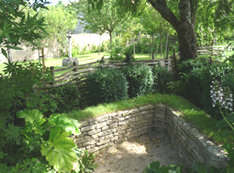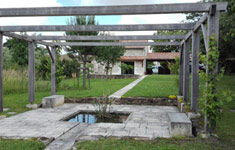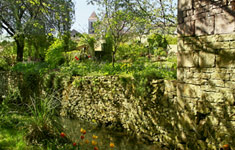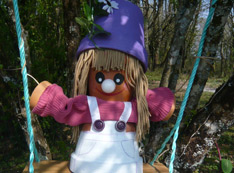
BIENVENUE AU JARDIN ANTIQUE

Enfin le visiteur peut se perdre dans ses réflexions et laisser libre cours à son imagination dans le théâtre de verdure, sur les bancs en pierre de taille, ou encore flâner dans la forêt de chênes.
This place is thought to have been the garden originating from Roman times of a sumptuous Gallo-Roman villa: the Châteliers villa whose remains are still visible nearby. Entering into the garden you discover different areas dating back to Roman Gaul. In the center of the garden, you will discover a pond reminding us of an atrium with its impluvium. The perpendicular alleys are reminiscent of the important thoroughfares of ancient cities |
|
|
BIENVENUE AUX JARDINS DE L’ARGENTOR

Nanteuil-en-Vallée is a town surrounded by water with the Argentor river and its canal. In the Argentor gardens, you can experience different aspects: Eugène Bureau’s gardens date from the beginning of the 20th Century, an aquatic garden created in 2000 with ponds, fountains, waterfalls or water jets, an arboretum with more than 60 varieties and an idyllic canal from where you can discover private gardens. If you want to find out more about remarkable trees, aquatic plants or wild species, this is the right place to go! |
|
|
BIENVENUE A JARD’IMAGINE
- 1
- 2






